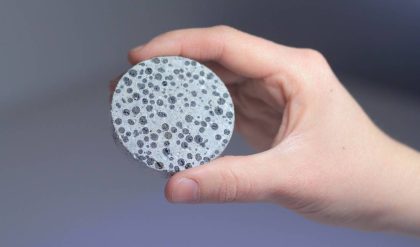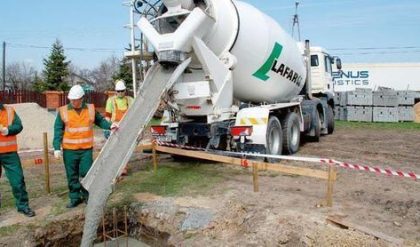In ferro cement productions following materials are used:
(i) Cement Mortar Matrix:
The ferro cement consists of a rich cement mortar matrix of 10 to 60 mm thickness with a reinforcement volume of 5 to 8% in the form of one or more layers of very thin mesh and a skeleton reinforcement consisting of mild steel bars or welded mesh.
(ii) Cement:
The choice of cement depends on the service conditions. The cement should be fresh, of uniform consistency and free of lumps and foreign matter.
(iii) Sand or Fine Aggregate:
Sand is an inert material. It occupies 60.to 75% volume in the ferro cement mortar. To impart good properties to the mortar, sand should be hard, strong, non-porous and chemically inert. It should be free from silt, clay and other organic impurities. The maximum particle size should be 2.36 mm.
The particles larger than 2.36 mm if present in sufficient quantity may cause the mortar porous if particles less than 1.18 mm are present in large quantity, will require more water for the required workability, affecting the strength and impermeability very adversely. Thus the sand should be of grading zones II and III with particles greater than 2.36 mm and smaller than 1.18 mm removed. Use of fine sand in ferro cement is not recommended.
(iv) Water/Cement:
As it governs the strength and workability of the mortar, it depends upon the maximum grain size, the fineness modulus and the grading of the sand. Generally water/cement ratio by mass may vary between 0.35 to 0.60. In order to reduce permeability, water/cement ratio should be kept below 0.40. The moisture content of the aggregate should be taken into account in the calculations of required water. The amount of water many be reduced by the use of appropriate admixtures.
(v) Cement/Sand Ratio:
Cement sand ratio may be kept 1:2 or 1:3. The slump of fresh mortar should not exceed 50 mm for most works the strength of moist cured cubes should be about 350 MPa.
The matrix constitutes about 95% of the ferro cement and governs the behaviour of the final product. Thus proper selection of constituent materials, their mixing and placing is important. The total volume of cement and fines should be about 300 cm3 per litre of mortar. A change in the amount of cement must be accompanied by a corresponding change in the fines.
Thickness of Elements:
The thickness of ferro cement elements usually is of the order of 2 to 3 cms with 2 to 3 mm external cover to reinforcement.
Reinforcement:
The reinforcement used in ferro cement is of two types:
(a) Skeleton Steel:
The skeleton steel frame is made conforming exactly to the geometry and shape of the structure. This is used for holding the wire mesh in position and shape of the structure. The diameter of the steel rods may vary from 3 to 8 mm and spaced at 70 to 100 mm apart. It may be tied reinforcement or welded wire fabric.
The welded wire fabric is made from 3 to 4 mm diameter wires welded at 80 to 100 mm centre to centre. These skeleton frames are used for cylindrical or other surfaces where these meshes can be bent easily. In case where higher stresses may occur, mild steel bars are used as skeleton steel.
The spacing of transverse and longitudinal steel bars depends upon the type and shape of the structure. In case of boat hulls a spacing of 75 to 100 mm is adequate, where as in water tanks, bins etc. the spacing may vary between 200 to 300 mm. The bars may be tied with the binding wires, they may also be welded. The reinforcement should be free from dust, loose rust, coating of paints, oil etc.
(b) Wire Mesh:
The wire mesh consists of galvanized wire of 0.5 to 1.5 mm diameter spaced at 6 to 20 mm centre to centre. The wire mesh may be of the shape as square woven wire mesh or welded wire mesh, expanded metal or Hexagonal wire mesh etc. Generally square woven meshes consisting of 1.0 to 1.5 mm diameter wires spaced about 12 mm are preferable. The minimum yield strength of plain wires used in fabric should be 415 MPa and 500 MPa for deformed wires. The steel content may vary between 300 kg to 500 kg per cubic metre of mortar.



Comments are closed.